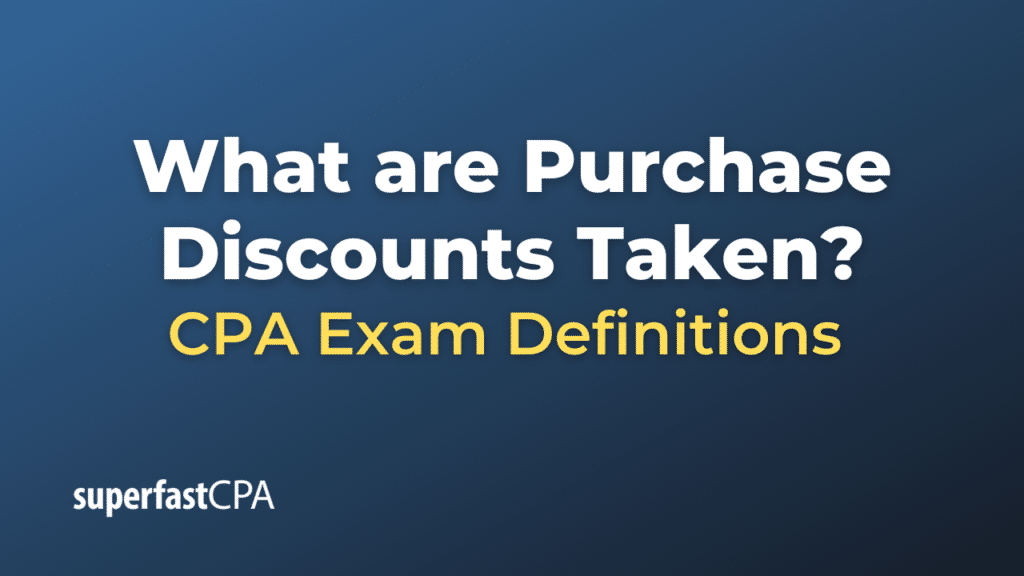Purchase Discounts Taken
“Purchase Discounts Taken” refers to the actual savings a buyer realizes by paying their invoices early, within the discount period.
For example, let’s continue with Shop X and Supplier Y from our last example.
Supplier Y sells goods worth $5,000 to Shop X, offering payment terms of 3/15, net 45. This means if Shop X pays the invoice within 15 days, they can avail a 3% discount.
So, if Shop X pays within 15 days:
- Discount: 3% of $5,000 = $150
- Payment: $5,000 – $150 = $4,850
In this scenario, the $150 is the “purchase discount taken.” Shop X effectively paid only $4,850 for the goods, instead of the full $5,000, because they paid early.
These discounts are often recorded in the buyer’s financial records, reducing the total cost of the goods or services purchased. They help improve the company’s profitability by reducing expenditure.
Example of Purchase Discounts Taken
Let’s say a bookstore, Book Haven, orders $2,000 worth of books from a publisher, Big Books Inc. The publisher offers a 5/10, net 30 discount term, which means Book Haven can get a 5% discount if it pays the invoice within 10 days.
If Book Haven pays within this 10-day period, here’s how the numbers would work out:
- The discount is 5% of $2,000, which equals $100.
- So, Book Haven would only pay $2,000 – $100 = $1,900.
In this case, the $100 is the “purchase discount taken.” This discount reduces the total cost of the books for Book Haven. They managed to save $100 by taking advantage of the early payment discount offered by Big Books Inc.
Book Haven would record this $100 as a purchase discount in their financial records, reducing their total expenditure and thereby effectively increasing their profitability.













